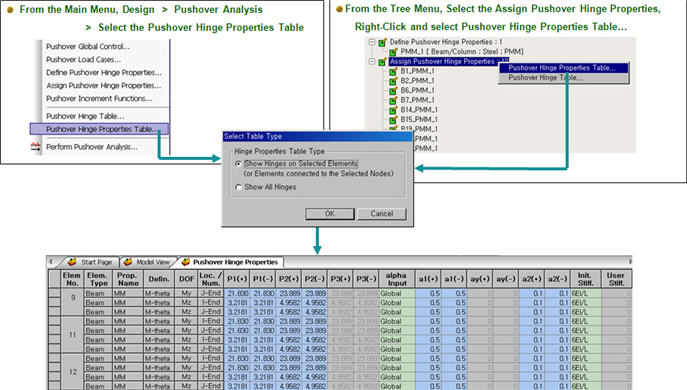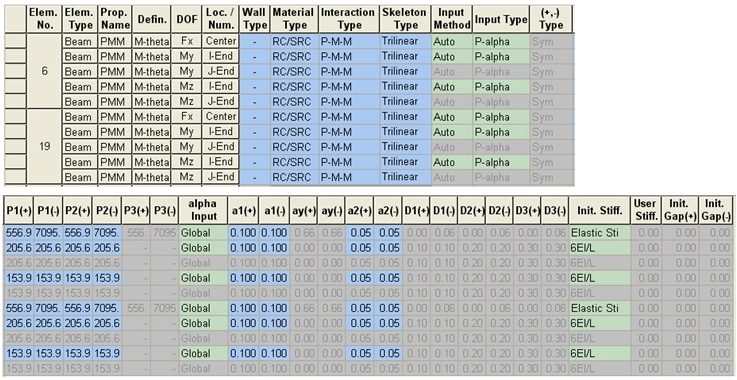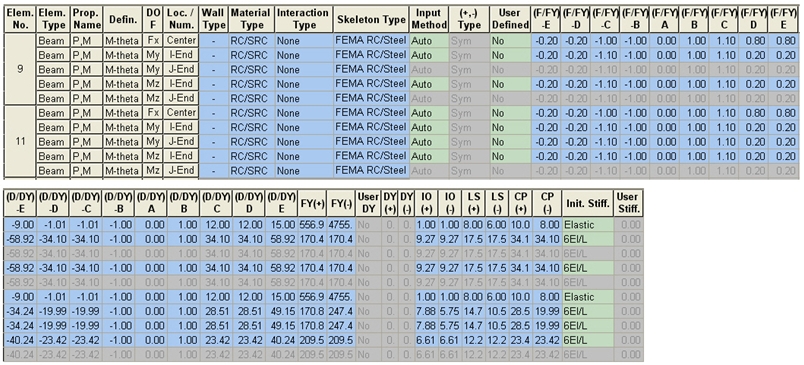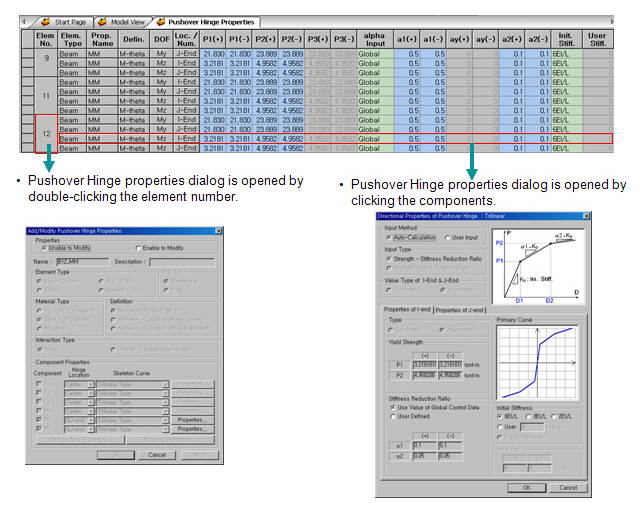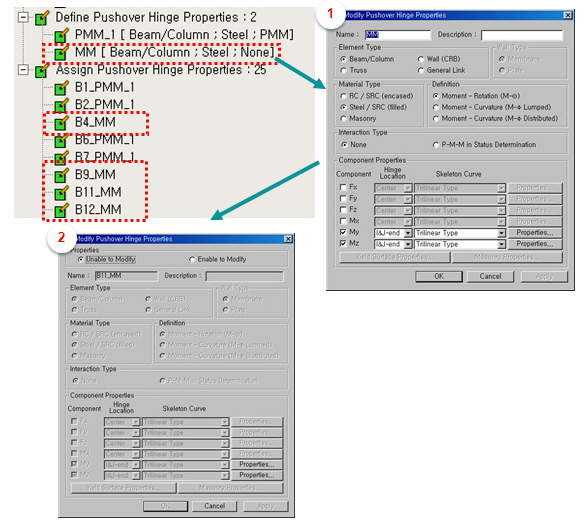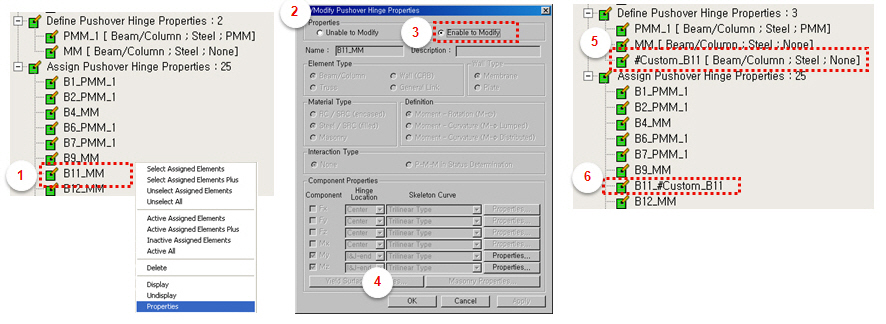Pushover Hinge Properties Table
|
|
|
|
|
|
Check or modify the hinge properties assigned to the elements in a spreadsheet format table. |
|
|
|
|
|
|
|
From the Main Menu select Design > Pushover Analysis > Pushover Hinge Properties Table. |
|
|
|
|
|
Hinge Properties Table Type
Show Hinges on Selected Elements: Display the Pushover Hinge Properties Table for the selected elements only. Show All Hinges: Display the Pushover Hinge Properties Table for all the elements to which hinge properties are assigned.
Pushover Hinge Properties Table color
Note 1 Link to the Pushover Hinge Properties dialog
Note 2 Change the assigned hinge properties
(1) Change the hinge properties by defined hinge properties type
Assigned hinge properties to the numerous elements can be modified at once.
¨ç Modify hinge properties in the Define Pushover Hinge Properties dialog. ¨è All the assigned hinge properties are automatically updated according to the modified hinge properties.
(2) Change hinge properties by assigned members After assigning hinge properties, hinge properties by members can be changed.
¨ç Right-click on the assigned hinge properties to be revised. ¨è Select ‘Properties’ to open the Pushover Hinge Properties dialog. ¨é Click ‘Enable to Modify’ option. ¨ê Change the properties and click ‘OK’ button. ¨ë New hinge properties is automatically generated. ¨ì Name of assigned hinge properties is updated.
(3) Change hinge properties using Pushover hinge properties Table
¨ç Right-click on the assigned hinge properties to be revised. ¨è Click ‘Pushover Hinge Properties Table’. ¨é Modify the values in the table. ¨ê If the values are updated in the table, message is displayed. ¨ë New hinge property is generated and the assigned hinge name is updated.
|
|
|
